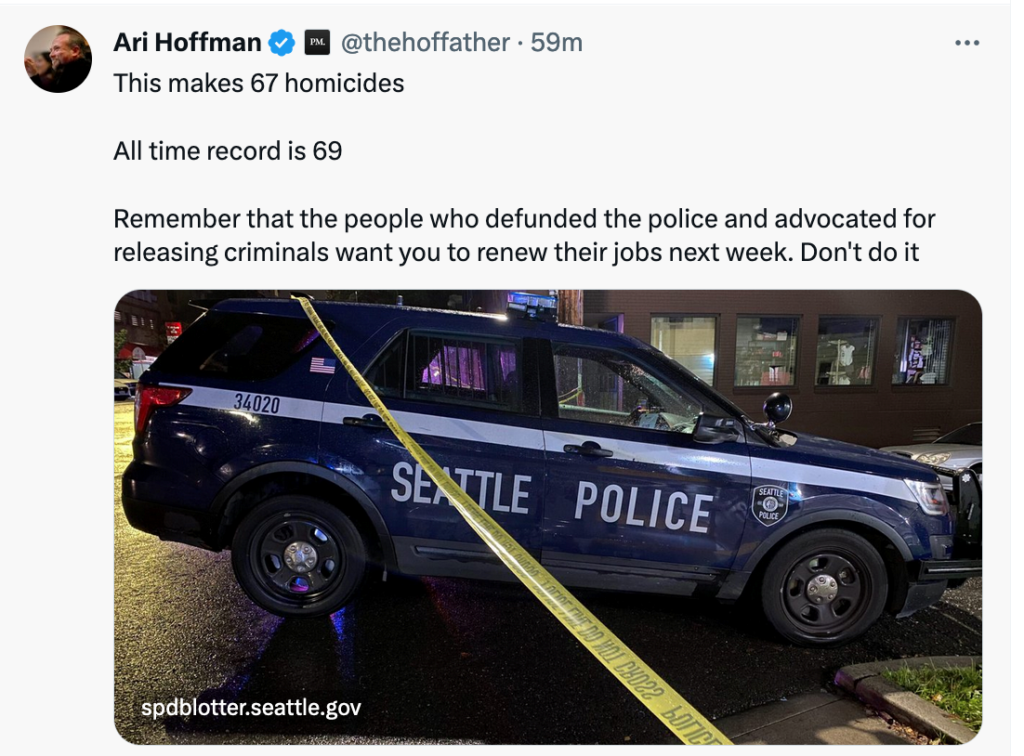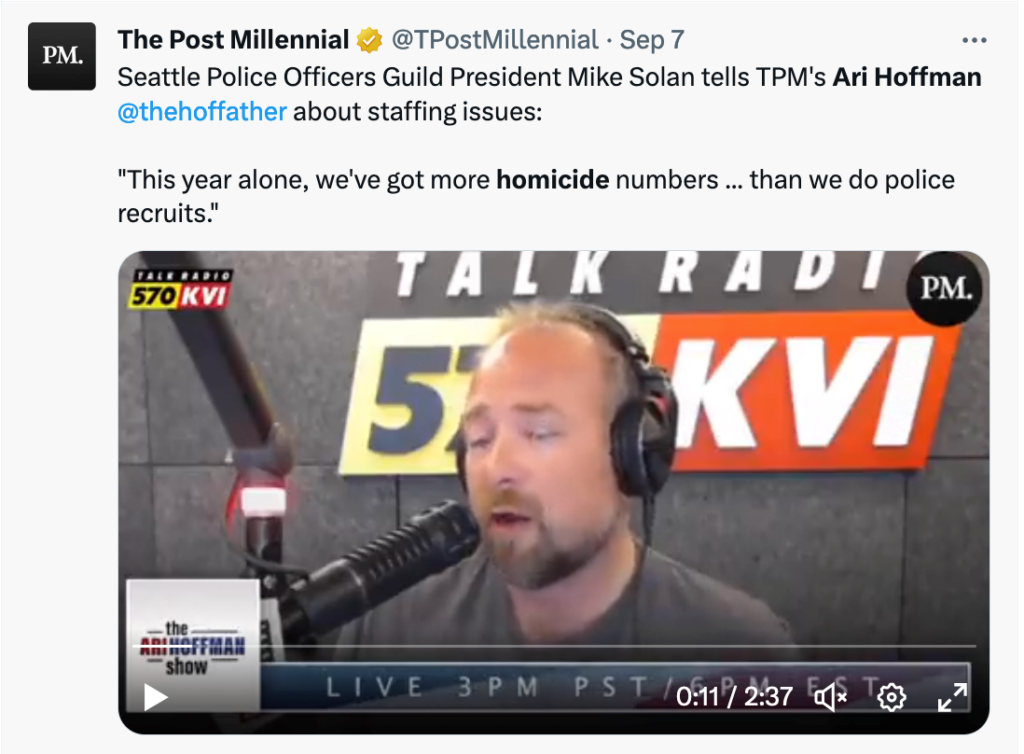
By Steve Pomper

I recently wrote about how tired cops are of continually having to say I told you so about anti-cop legislation disguised as “police reform.” Add the many other things politicians are doing to chase cops out of the profession and to deter potential recruits, and the echoes in police precincts bellows.
The I-told-you-so effect comes when the people who were wrong must fix their anti-cop mistakes. But the problem is even more profound. Whenever officials act to prevent cops from doing their jobs, which forces many to resign, retire, or lateral to places more police-friendly, even the nuanced issues become more obvious.
For example, a recent FOX 13 story dug into Washington State’s homicide clearance rates and discussed why they’re so dismal. Unfortunately, you can find the same story across the U.S., but for my own reasons, I still live in Washington and had a law enforcement career here, so, there you go.
Focusing on a mother in mourning who questions why someone would murder her son who’d gone to play basketball near a local high school, FOX 13 explored the low homicide clearance rates in the state. Six months, still no answers for mom.
This next bit may seem a tad unfeeling, and I don’t know this woman. But though I have tremendous sympathy for her, when I think of all the city residents who’ve been victimized by “de-policing” policies, I can’t help but wonder who people like her voted for.
But I’ll risk the insensitivity because electing better representation at the local and state (and federal) levels could prevent many of these criminal homicides. And when murders occur, police could bring more killers to justice. And maybe bring a slight peace of mind to a grieving mother.
In Kent, a city south of Seattle, their homicides for 2023 are already higher than last year, with two months remaining. In 2019, 2020, and 2021, according to FBI statistics, solved cases were one out of four, three of eight, and six of 12, respectively. That’s a fifty percent or lower clearance rate.

Photo by Andrey Zvyagintsev on Unsplash
Tacoma has a similar story. In 2019, police cleared 11 homicides of their 17 cases. In 2020, 15 of 28, and in 2021, cops investigated 30 homicides, of which they solved 16. Again, about 50 percent solved. These numbers tell two stories: poor clearance rates and rising homicides.
This is not a funny topic, but this is where Seattle told those smaller cities, “Hold my beer.” With an anemic 24 percent clearance rate, FOX 13 noted, also wryly, “That means if you’re killed in Seattle, the suspect has a 75% chance of getting away with [your] murder.”
The executive director for the Washington Association of Sheriffs and Police Chiefs (WASPC), Steven Strachan, notes an “upward trend in homicides… in Washington.” He added that national homicide numbers are coming down a bit, but in this state, homicides are “increasing at an alarming rate.”
Seattle’s record for homicides is 69, set in 1994. I remember it well as I’d come aboard in 1992. But with two months left in the year, the city is already at 65 homicides (if you count an unborn baby who died when the mother was murdered—and I do).
The story says Seattle is “down 344 officers,” but Emerald City officials have been fudging police staffing numbers for decades. The number is likely much higher. Deputy Chief Eric Barden (a friend and my sergeant for several years) spoke of the “staffing crisis,” noting, “You eventually can’t do more with less. You eventually do less with less, and that’s unfortunately where we’re at right now.”
“Do more with less” was already a tired mantra when I retired in 2014. The city could use more candid assessments like Chief Barden’s.
As KVI 570 radio host Ari Hoffman, writing at the Post Millennial, reported, “The FBI recommends the average officer-to-resident ratio for… Seattle as 2.6 per 1,000 residents.” Seattle has 1.3 or half that recommendation. Imagine having to do anything you do in life with half the people. Hoffman has also said, “nearly 600 officers have fled the department….” And it’s no secret SPD’s hiring is in the crapper. And even if 344 is accurate, even that would be a significant shortage.

DC Barden explains the less-often-explored ramifications of low staffing. He said the department has not cut homicide staffing, but when caseloads increase, detectives are spread even thinner. Hoffman said, “This year alone, we have more homicide numbers… than we do police recruits.”

Cops are not plug-and-play. Whether you replace a veteran patrol officer with a rookie or an experienced detective with a veteran patrol officer, there is an unavoidable learning curve. There’s the lost overall experience that time as a cop gives you, and you also lose the specific experience being in a particular unit provides.
Back when I was in the hiring process, I did a ride-along with two gang detectives who’d recently returned to patrol. Great cops, but watching them fumbling with the newfangled gadgets was amusing. The department had recently installed mobile data terminals (MDT computers) in patrol cars.

2018 version of the 1992 version I mention in the article.
The more personnel lost, the more you must replace, and the less experience you have on the streets and in detective units. Agencies feel this is up and down the investigative ladder. Most often, patrol officers will be the first to respond to a homicide. They will initiate the investigation, protect the scene, and call for supervisors who will request homicide detectives respond.
If there are fewer patrol officers, evidence gathering suffers, which gives detectives less to work with, affecting clearance rates. It’s not that they don’t care about the mother of a murdered son or that they don’t want to clear the homicide and put the human filth in prison. DC Barden pointed out the truth of it. Right now, every single cop in the department, from patrol to homicide, is stuck with doing less with less.
And if the voters continue to elect people who are okay with less, they will continue to get less—and less public safety.